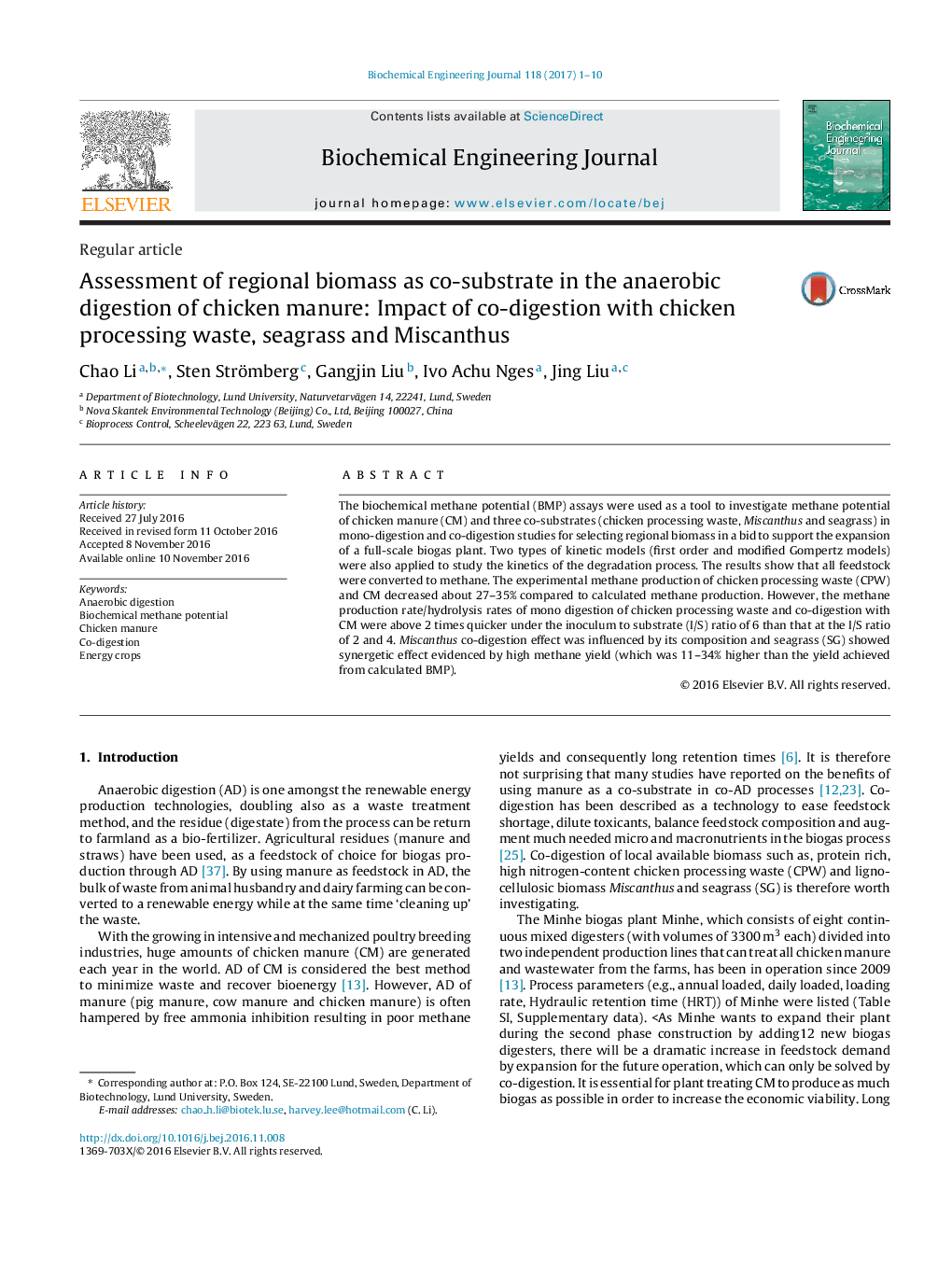| Article ID | Journal | Published Year | Pages | File Type |
|---|---|---|---|---|
| 4752168 | Biochemical Engineering Journal | 2017 | 10 Pages |
â¢Feasibility of digesting manure with regional biomasses was performed in batch test.â¢Sea grass was the best co-substrate, showing significant Synergistic effects.â¢Up to 35% more methane was produced during co-digestion as compared to mono-digestion.â¢Cumulative methane production fitted positively with the kinetic models.
The biochemical methane potential (BMP) assays were used as a tool to investigate methane potential of chicken manure (CM) and three co-substrates (chicken processing waste, Miscanthus and seagrass) in mono-digestion and co-digestion studies for selecting regional biomass in a bid to support the expansion of a full-scale biogas plant. Two types of kinetic models (first order and modified Gompertz models) were also applied to study the kinetics of the degradation process. The results show that all feedstock were converted to methane. The experimental methane production of chicken processing waste (CPW) and CM decreased about 27-35% compared to calculated methane production. However, the methane production rate/hydrolysis rates of mono digestion of chicken processing waste and co-digestion with CM were above 2 times quicker under the inoculum to substrate (I/S) ratio of 6 than that at the I/S ratio of 2 and 4. Miscanthus co-digestion effect was influenced by its composition and seagrass (SG) showed synergetic effect evidenced by high methane yield (which was 11-34% higher than the yield achieved from calculated BMP).
